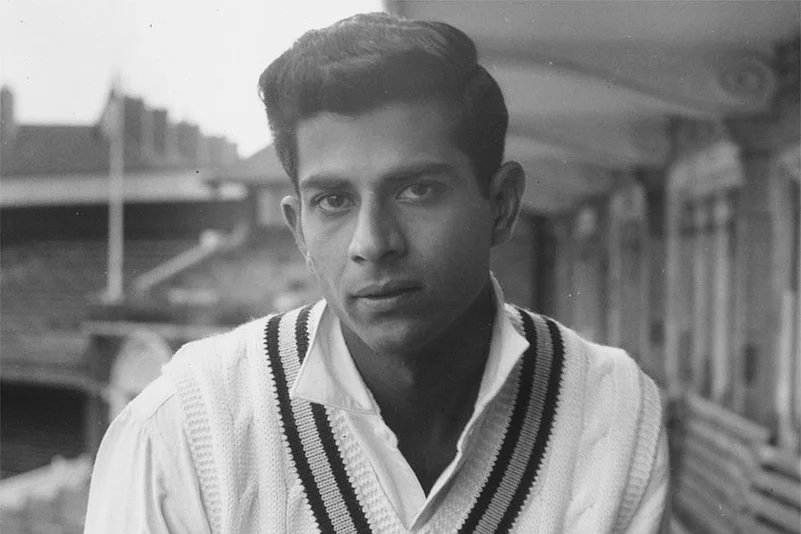Virat Kohli has been in sublime form in the recent past. Enamoured by the form he is in and the impact he has made on world cricket, Wisden, a name synonymous with cricket as its oldest publisher, has let go of an age-old tradition. Wisden India Almanack, like its UK sister publication Wisden Cricketers’ Almanack, has a rule that a cricketer can be splashed on its cover only once in his lifetime. For its 2017 edition, the Indian version has set it aside and has honoured Kohli by featuring him on its distinctive blue jacket for a second time in five years since its launch in this country. Kohli had shared space with Rahul Dravid on the 2013 cover.
Not just Wisden India, the 28-year-old Kohli has also compelled Wisden Cricketers’ Almanack to honour him on the traditional yellow jacket of its 2017 edition. On this UK cover, the young master plays a reverse sweep—a modern shot played to score runs quickly by confusing opponents, and hitherto seen mostly in shorter versions—in a Test! Wisden has also picked Kohli for a second time as Cricketer of the Year, another tradition thrown out the window. Hold on, there’s more: Kohli is a hot contender for the ‘Leading Player of the Year’ accolade of the UK almanack, which will be published in April. For the record, Kohli is yet to be picked among the ‘Five Cricketers of the Year’ of the UK almanack as he miserably failed in his only Test tour of England, in 2014.
Apart from Kohli, Wisden India Almanack has more—prose, photos, scorecards, statistics. It has extensive coverage of the 2015-16 Indian domestic season, but there is more here than just grist for the record-junkie. There are delightful articles by Microsoft CEO Satya Nadella, Carnatic musician T.M. Krishna, British philosopher Ray Monk—award-winning biographer of Ludwig Wittgenstein—all writing about their tryst with and love for the great game.
Nadella admits falling in love with cricket while moving cities as a child—from Hyderabad to Mussoorie to Delhi (where he watched his first Test) and back to Hyderabad. “Cricket for me is like a wondrous Russian novel with plots and subplots played out over the course of multiple acts,” he writes. In Hyderabad, Nadella represented his school in tournaments and got “completely smitten” by the glamour boys of Indian cricket—M.L. Jaisimha, Abbas Ali Baig, Mumtaz Hussian and Sunil Gavaskar. “In fact, Jaisimha’s two children attended my school; as a result, we were surrounded by cricket glamour, tradition and obses sion,” recalls the “terrible” off-spinner and late order batsman about days spent at the Hyderabad Public School. Nadella admits he learnt three vital lessons from cricket that he implemented in his career—to compete vigorously and with passion in the face of uncertainty and intimidation; putting your team first, ahead of personal recognition; and the central importance of leadership.
The ‘Hall of Fame’ section has now been graced by former India captains Vinoo Mankad and Sourav Ganguly. Ex-captain Nari Contractor and V.V.S. Laxman, who have played with the two in different eras, have written appreciations of the two. And former India coach from 2000 to 2005, John Wright, has revealed in his piece on coaching that his successor Anil Kumble had the makings of a coach. The annual has packed articles for every taste, light-hearted reading, book reviews, obituaries, records, and my personal favourite, ‘Chronicles’—a compilation of amusing, crispy, off-field stories picked from journalists around the globe.
Whenever recent Indian cricket history is written about, the 2013 IPL betting-fixing scandal can’t be left out. This governance and reforms issue has reared its head at several places. Editor Suresh Menon has highlighted it in his Notes By The Editor, pointing out “BCCI’s traditional allergy to reform”. In the context of BCCI’s impending reforms, a profile of former CJI R.M. Lodha, a vegetarian and a warm host, gives a peep into his many other interests. Simon Barnes pithily describes cricket administrators’ greed to garner more money for their organisations. “People who run cricket don’t necessarily want the money for themselves. They want the power it gives, they want to control things, make decisions, have people do what they say, and, as a bonus, revel in the cosmetic side of power: the private jets and presidential suites and unsolicited gifts and the fawning of one and all,” he writes. Touche.
















